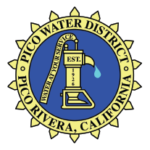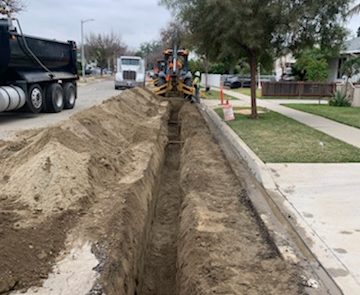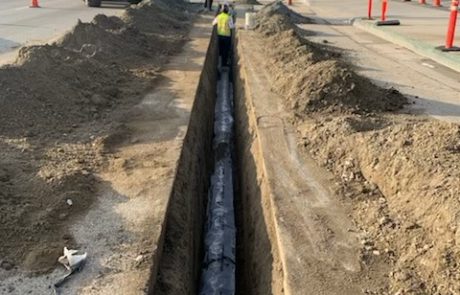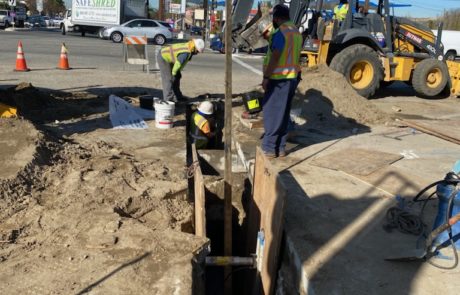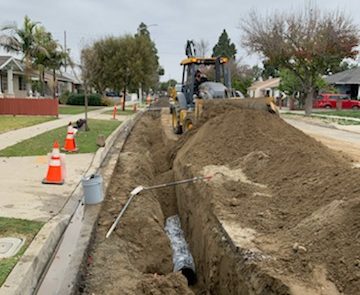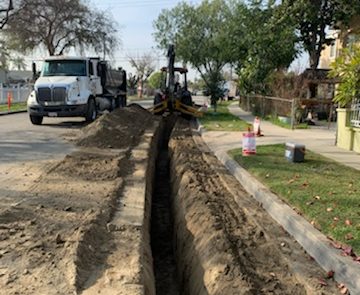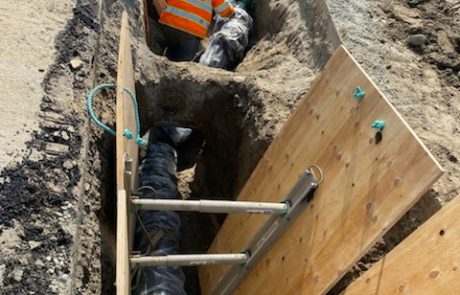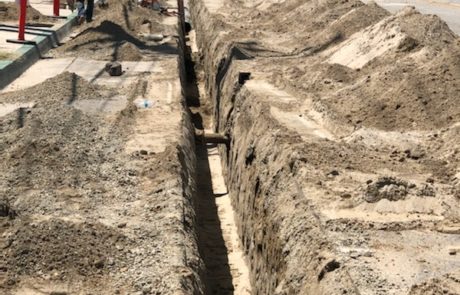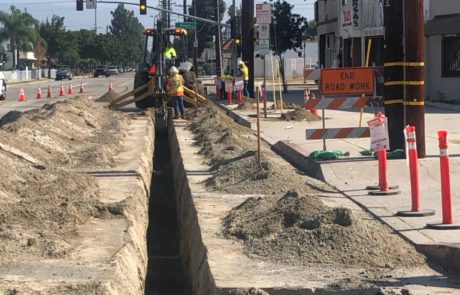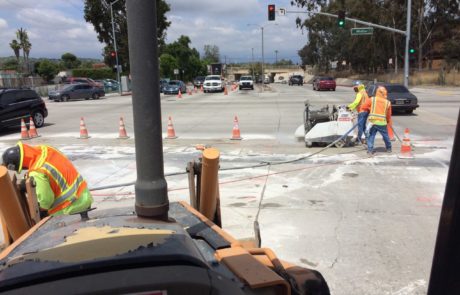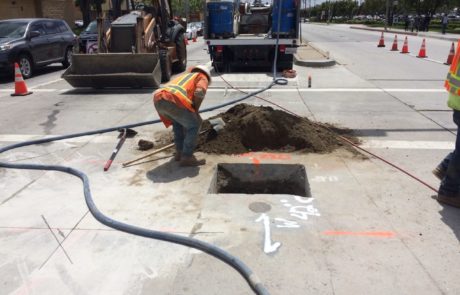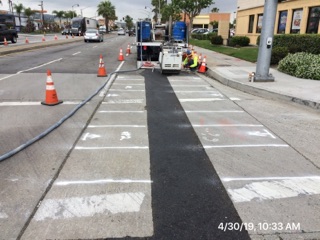ABOUT US
OUR HISTORY
In the late 1800s, the Pico Rivera area was largely agricultural. Walnuts were the primary crop, with corn, grapes, avocados and various other fruits also grown in the area. Some residential development occurred in the late 1800s and early 1900s, served by their own individual water systems.
Pico Water District was formed in 1926 as a County Water District under the State Water Act of 1913, to provide water service to the 243 homes then situated in the community of Pico. Prior to the incorporation of Pico Rivera in 1958, the area consisted of two unincorporated towns, Pico and Rivera. Before formation of the District, those homes were served by five small water systems, which depended on groundwater wells to provide water to the residents. The problem with those systems was that the residents who lived near the wells got most of the water and the strongest water pressure, while people who lived further away from the wells received water at very low pressure. The Pico-Rivera Chamber of Commerce was instrumental in creating the District, by showing the residents that if they wanted to maintain and increase the value of their homes, they needed an improved water system.
The residents began efforts to form the District. However, because the assessed valuation of the residents’ properties did not exceed the $1 million necessary to secure the $130,000 in bond funding to construct the new water system, the residents convinced local ranchers to join in the District so that the assessed valuation would exceed the required $1 million threshold. Voters approved the proposal and Pico Water District was established.
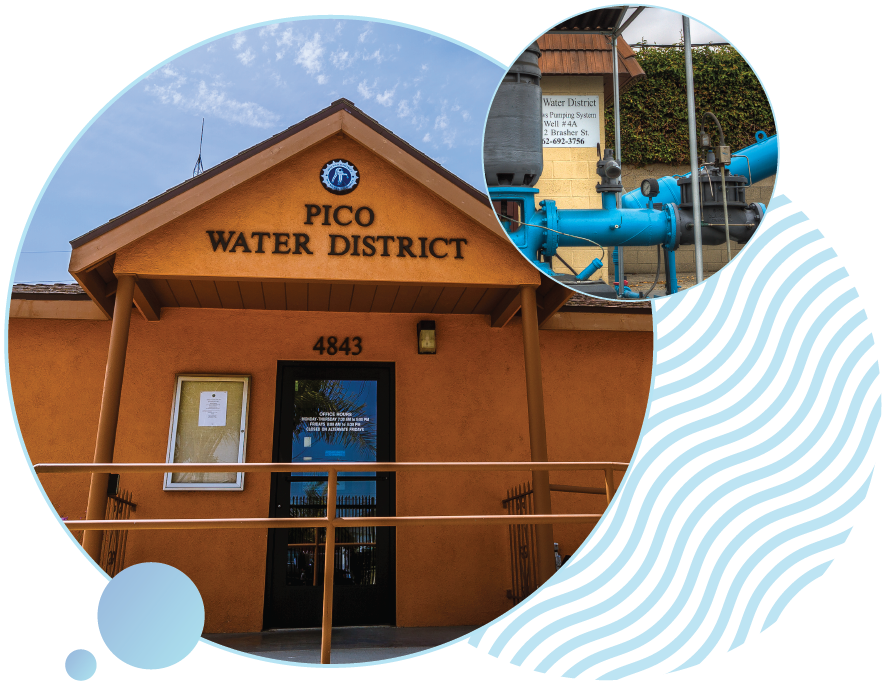
The first elected directors of the District were Donald H. Lycan, Virgil M. Robinson, George Wells, Charles A. Thomas and Harlan A. Cate (for whom the District’s Cate Reservoir is named). The first Board of Directors meeting was held on September 20, 1926.
Over the years, the District has grown from its initial 243 service connections, to 608 in 1936, 1,048 in 1946, 4,765 in 1956 (as you can see, significant growth occurred in the post-World War II years), 5,076 in 1966, 5,233 in 1976, to 5,403 connections in 2020, serving the District’s 2.3-square-mile service area.
Today the District provides water service to its customers through the use of five active wells ranging in water production from 700 to 2,800 gallons per minute, and one 1.25-million-gallon reinforced concrete reservoir. The District pumps all of its water from the underground aquifer known as the Central Basin, which is an adjudicated water basin. The District delivers water to residential, commercial, industrial, and governmental customers.
In 2008, the District’s Board of Directors approved development of a Water System Master Plan to determine areas in need of improvement and help management make strategic decisions that would improve upon the reliability and efficiency of the District.
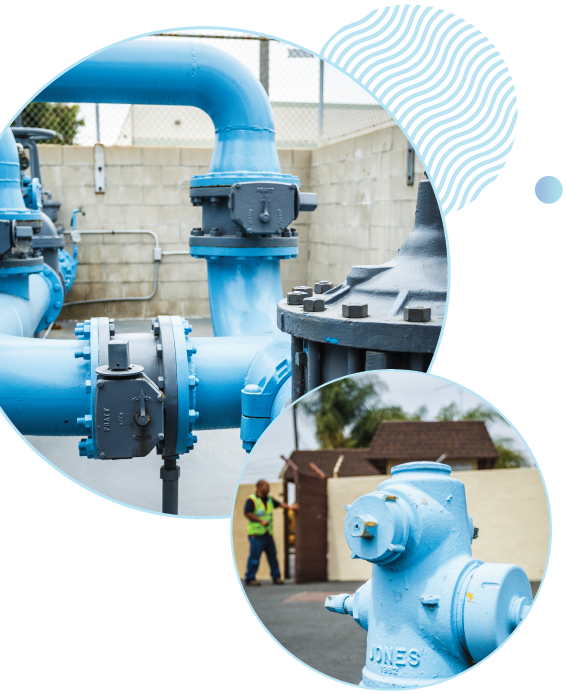
MISSION STATEMENT
The District’s mission is to provide the highest quality and reliable supplies of water at the lowest possible rate, provide the best service, manage its infrastructure to meet present and future needs, and strive to minimize economic impact to its water customers.
SERVICE AREA
Pico Water District serves more than 23,000 people through more than 5,400 water connections. Our service area covers approximately 2.3 square miles within the City of Pico Rivera.
WHAT WE DO
METER READING
Pico Water District has experienced many changes since it was established in 1926. The first meters used by the District were known as “direct manual read meters.” This meant field staff had to visit each meter to read it. In 2008, the District began a program to replace those manually read meters with more advanced technology that allowed staff to read the meters remotely. This technology is called Automatic Meter Reading System (AMR). AMR meters have the ability to store water usage data internally in the meter and use radio waves to transfer that data to a high-powered laptop used by field staff. The information is then provided to the billing staff to create the water bill.
AMR technology is a more efficient use of staff time in reading meters, is more accurate and cost effective for our customers, To minimize the impact on customers, the District is spreading the conversion of manual read meters to AMR meters over several years.

WATER SYSTEM IMPROVEMENTS
The Board of Directors recognizes it must replace aging pipelines and wells. The District is committed to replacing all pipelines that are 4-inch diameter and smaller with 8-inch diameter mains or larger to improve flow and fire protection. The District utilizes its 2008 Water System Master Plan to prioritize capital improvement projects. Pico Water District also combines water improvement projects with developer-funded projects whenever possible to reduce overall construction costs.
The District continually evaluates project priorities to utilize any available cost savings. Typical methods include competitive bids on construction projects and incorporating new technologies and construction methods.
CURRENT PROJECTS
COMPLETED PROJECTS
Undersized water mains were replaced along Stephens Street, from Durfee Avenue east to the end of the street, to improve reliability and fire service. Customer meter boxes and connections to the water main were also upgraded and several hydrants were added. The work was completed in June 2021 at the cost of $181,000.
To reduce costs and speed up the completion of work, these two projects were combined and completed simultaneously. Undersized water mains along Layman Avenue and around the intersection of Beverly Street and Rosemead Boulevard were updated with 3,270 linear feet of 8-inch pipes. Service and fire hydrant connections were also replaced as part of this $1.2 million project completed in June 2021.
To better accommodate current and future service needs, new water mains were installed along Durfee Avenue. The project included 862 linear feet of 12-inch water mains. Fire hydrant and service connections were also updated. The Durfee Street Extension Project was completed in November 2019 at a cost of $619,400.
Whittier Boulevard Pipeline Replacement Project
This project upgraded water mains to improve service in the area. Crews installed 1,010 feet of 12-inch pipe and 3,400 linear feet of 8-inch pipe. Lateral connections to customer meters and fire hydrants were also upgraded. This $1.7 million project was completed in April 2019.
This project upgraded water mains to improve service in the area. Crews installed 1,010 feet of 12-inch pipe and 3,400 linear feet of 8-inch pipe. Lateral connections to customer meters and fire hydrants were also upgraded. This $1.7 million project was completed in April 2019.

WATER SYSTEM MAINTENANCE
To protect the health and safety of the District’s customers, staff responds to emergency calls as quickly as possible. In most cases when there is a leak or mainline break, repairs can be made without turning off the water or disrupting water service to our customers. If a water shutoff is necessary, customers will be notified in advance.
Flushing is a common practice for improving water quality in a local area or at the end of a street where the water does not circulate back into the main system. Flushing involves opening a fire hydrant or blow-off at the end of the line and running the water until it is clear.
Isolating valves are installed on the main lines and used to turn off water or slow the flow of water when necessary. Because these valves are constantly in contact with water, water hardness can make these isolating valves difficult to turn if not used every few years. District staff ensures all valves are exercised at least once every two years and faulty valves are replaced.
Fire hydrants are a critical tool during emergencies. Fire hydrants are exercised as part of the District’s valve exercising program. This exercise/test data is also recorded and compared to previous records. If necessary, replacement or repairs are scheduled.
To protect public health, the District is required to operate a cross connection program. This program protects the integrity of the water system from other water supply sources with unknown water quality. The goal is to either eliminate the cross-connection or control it through the installation and maintenance of an approved backflow prevention assembly. Typical examples of potential cross connections include landscape irrigation, fire sprinkler services, health care facilities, manufacturing facilities and recycled water users. The customer is responsible for preventing pollutants and contaminants from entering the water system, starting at the point where water exits the water meter. The customer, at their expense, must install, operate, test, and maintain any required backflow prevention assembly as directed by the District. As required by regulation, all backflow prevention assemblies must be tested annually by an approved and certified backflow tester.
The District is required to take a minimum number of samples of the water system throughout the year. These samples include weekly bacteriological samples of the distribution system, and weekly, monthly and quarterly sampling of the wells. Sampling of the water system helps to ensure the safety of our drinking water.
TRANSPARENCY
FINANCE
The Board of Directors of Pico Water District and staff strive to provide the highest quality and reliable supplies of water at the lowest possible rate, provide the best service, manage its infrastructure to meet present and future needs, and strive to minimize economic impact to its water customers.
This mission statement cannot be met without the financing needed to carry out those goals and objectives. Without the proper funding of capital improvement projects, the District would not be able to replace needed infrastructure, create a rate stabilization fund or set aside monies for reserves. Having a sound and balanced water rate allows for District growth, for facilities to be replaced and maintenance to be carried out in a timely manner, and for Staff to plan for the future and build for reliability.
SALARY COMPENSATION
The Pico Water District’s Board of Directors sets and adopts compensation for Directors and compensation ranges for District employees, including all benefits. The Board meets regularly on the first and third Wednesday of each month at 5;30 p.m.. at the District’s office. Water Code 20202 establishes the parameters in which Board members can be compensated for service. Board members are compensated based upon each day of service provided to the District and cannot be paid for attending more than ten (10) Board-approved meetings per month. Board members are paid $150 for each day of Board-approved service.
The California State Controller’s Office hosts a database of public employee salaries. In accordance with AB2040, Pico Water District complies with all applicable transparency requirements by disclosing all compensation to the State Controller’s Office.
Click HERE to view the State Controller’s website regarding Pico Water District’s compensation.
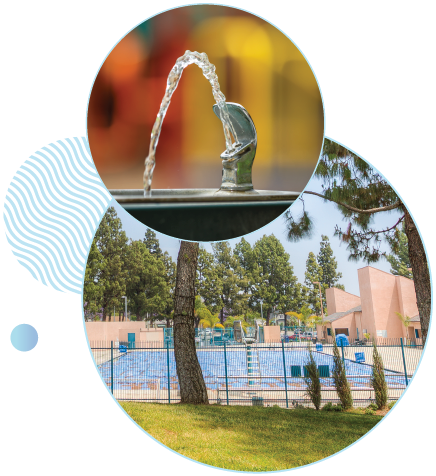

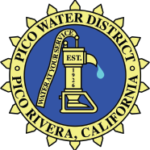
LOCATION:
4843 S. Church Street
Pico Rivera, CA
90660-2102
MAILING ADDRESS:
PO Box 758
Pico Rivera, CA
90660-2102
PHONE: 562.692.3756
FAX: 562.692.5627
